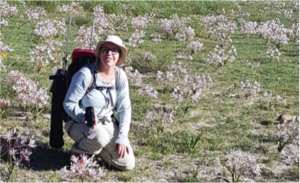 Territory defence in Meerkats: The influence of group size on investments
Territory defence in Meerkats: The influence of group size on investments
Department of Evolutionary Biology and Environmental Studies
University of Zurich
Contact: gina.moergeli@uzh.ch
To see how group size can influence the defensive behaviour, meerkats (Suricata suricatta) provide a unique opportunity. In this species, beside the intensity of scent marking, inspection of scent and the amount and duration of recruitment calls, as well as the change in post-inspectional movement and behavioural patterns are an indication for the degree of investment. In my MSc research I am assessing how group size influences the reaction to intruders.
During a six month period I collect data on natural occuring marking behaviour on dominant and subordinate individuals in different sized groups at the Kalahari Meerkat Project. In addition, I conduct scent mark presentations, comparing the reaction to scent at the periphery against the centre of the territory, and check for the impact of the opponents group composition (groups vs. roving males). Furthermore, I analyse longterm adlib data of the KMP on marking behaviour (location and frequency) and how this relates to group size and other social and ecological factors.

